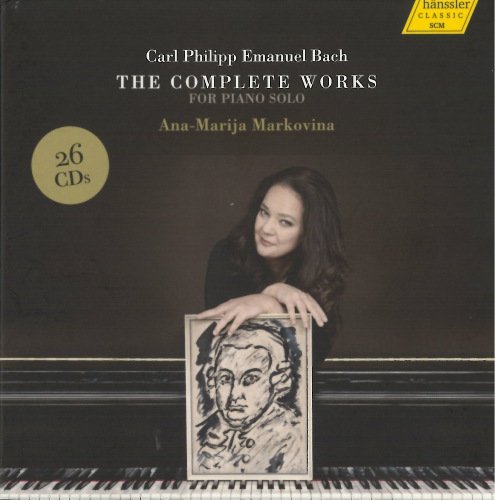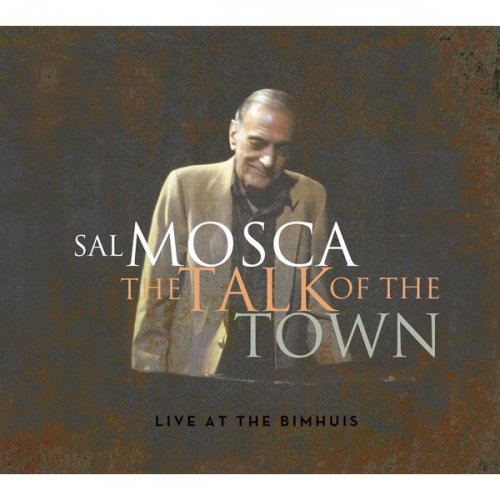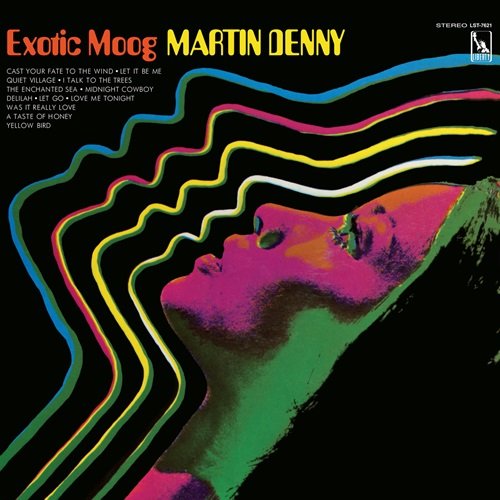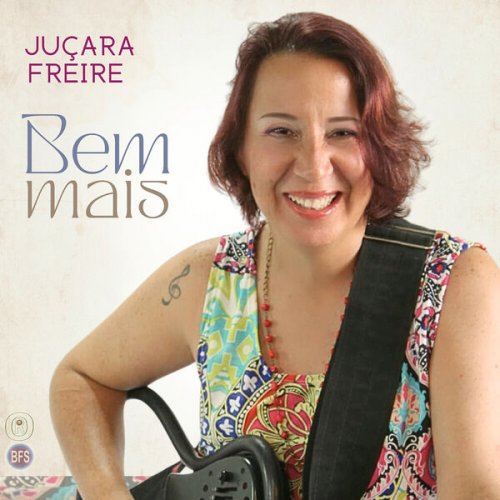Ana-Marija Markovina - C.P.E. Bach - The Complete Works for Piano Solo (26CD) (2014) CD-Rip

Artist: Ana-Marija Markovina
Title: C.P.E. Bach - The Complete Works for Piano Solo
Year Of Release: 2014
Label: Hänssler Classic
Genre: Classical
Quality: FLAC (image+.cue,log,scans)
Total Time: 33:46:08
Total Size: 7,5 Gb
WebSite: Album Preview
Tracklist: Title: C.P.E. Bach - The Complete Works for Piano Solo
Year Of Release: 2014
Label: Hänssler Classic
Genre: Classical
Quality: FLAC (image+.cue,log,scans)
Total Time: 33:46:08
Total Size: 7,5 Gb
WebSite: Album Preview
Performers:
Ana-Marija Markovina, piano
This 26-CD set containing CPE Bach’s complete solo piano works represents a landmark of the highest importance and, more significantly, listening pleasure. Ana-Marija Markovina has made a specialty of playing these works. She previously recorded the Prussian and Württemburg sonatas (for Genuin), but it is difficult to overstate the richness and variety found on these discs, or Markovina’s consistent success in rendering it all with such freshness, excitement, intensity, and charm. CPE Bach’s keyboard output consists primarily of sonatas, dozens of them, ranging over the entire course of his career, roughly from the 1740s through the 1780s. Most are three-movement pieces in fast-slow-fast form, but there are also rondos, fantasias, variations, character pieces, teaching pieces, arrangements of concertos and other orchestral works, dances, and everything from the very simple to the exceptionally complex, both technically and expressively—an entire world. More astonishingly, the quality of this music is almost uniformly high. Bach was a true craftsman, and while everyone will have their favorite works–and it’s pointless to say that it’s all equally good–you can sample just about anything on any of these discs and you will find plenty to enjoy and captivate your attention.
Markovina plays this music on the modern piano, the instrument that comes closest to any available in Bach’s day to realizing his clearly notated intentions. For example, he almost always asks for a full range of dynamics, from pp to ff, and his writings make clear that he valued above all a beautifully sustained, singing tone. The clavichord offered him the most possibilities in this regard at the start of his career, while in his last years his clear preference was for the piano (even though he had expressed reservations about early versions of the instrument in his 1750s Essay on the True Art of Playing the Keyboard). Markovina exploits the piano’s full dynamic range, as well as its ability to vary articulation, sustain the melodic line, and add muscle to Bach’s emphatic and often syncopated rhythmic schemes. In this respect she is far bolder than, say, Danny Driver’s genteel, almost effeminate CPE Bach recordings on Hyperion.
However, the most telling comparison has to be made with Miklós Spányi’s ongoing series of the complete keyboard works for BIS. Spányi uses period instruments, which have some advantages (the clavichord’s vibrato, for example), but also all of their inadequacies, including a lack of sustaining power and often a great deal of mechanical noise. On the piano, Bach’s music sounds modern; on early instruments, it sounds old. This contrast is exacerbated by Spányi’s inability to play a true allegro at speed. Consider, for example, the marvelous Sonata in B minor Wq. 65/13, which dates from the 1740s. The finale is marked “Allegro molto”. Spányi takes about six minutes (on the clavichord), Markovina slightly more than three. The difference in both sonority and expressive intensity is shocking, with Markovina infinitely more powerful and exciting.
CPE Bach’s modern reputation rests largely on his music in the “empfindsamer Stil”, with its highly expressive, emotionally eruptive, and constantly surprising writing; but a little-known aspect of this style was also the attempt to imbue music with a genuine sense of humor. Haydn, for example, learned a great deal from Bach’s pregnant use of silence. So rather than offer the usual examples of minor-key pathos, I offer as a listening sample the start of “L’Aly Rupalich”, a character piece also provisionally entitled “La Bach”, and possibly intended as a self-portrait of the composer. CPE Bach scholar Paul Corneilson describes the work as “a disco piece”, and how right he is.
Corneilson is also the Managing Editor of the Packard Humanities Institute’s ongoing CPE Bach Complete Edition, and it is largely thanks to that organization that this set of recordings has been made possible. CPE Bach fans, then, should be delighted to know that Corneilson has assembled an absolutely splendid volume of scores under the title The Essential C.P.E. Bach, containing 25 “greatest hits” from the composer’s keyboard, chamber, orchestral, and vocal music. Retailing for only $50, this beautifully printed, 350-page volume also contains excellent introductions to the composer as well as all of the music contained therein, a bibliography, a select discography, and a concordance that helps to locate each work by Wotquenne and Helm numbers.
Highlights include not only “L’Aly Rupalich”, a selection of sonatas, and the wonderful Rondo in E minor subtitled “Farewell to My Silberman Clavichord”, but also the Sonata for Unaccompanied Flute, the programmatic Sonata in C minor for Two Violins and Bass, and the amazingly dark Fantasia in F-sharp minor for Violin and Keyboard “CPE Bach’s Emotions”. There are also two complete symphonies, two complete concertos, and among the vocal pieces a bit of the celebrated Magnificat and the extraordinary Heilig for double chorus and double orchestra, a masterwork that everyone who loves Bach (Sr.) and Handel really must hear (there’s a fabulous performance on Harmonia Mundi).
You can order the score directly here, and I can’t recommend this elegant and smartly assembled volume highly enough. The same holds true of Markovina’s big box of Bach. I know, 26 CDs is a lot, and you’re not going to be playing them every day, but the important thing to remember is that you could, and you’d never be bored. -- David Hurwitz, ClassicsToday
Markovina plays this music on the modern piano, the instrument that comes closest to any available in Bach’s day to realizing his clearly notated intentions. For example, he almost always asks for a full range of dynamics, from pp to ff, and his writings make clear that he valued above all a beautifully sustained, singing tone. The clavichord offered him the most possibilities in this regard at the start of his career, while in his last years his clear preference was for the piano (even though he had expressed reservations about early versions of the instrument in his 1750s Essay on the True Art of Playing the Keyboard). Markovina exploits the piano’s full dynamic range, as well as its ability to vary articulation, sustain the melodic line, and add muscle to Bach’s emphatic and often syncopated rhythmic schemes. In this respect she is far bolder than, say, Danny Driver’s genteel, almost effeminate CPE Bach recordings on Hyperion.
However, the most telling comparison has to be made with Miklós Spányi’s ongoing series of the complete keyboard works for BIS. Spányi uses period instruments, which have some advantages (the clavichord’s vibrato, for example), but also all of their inadequacies, including a lack of sustaining power and often a great deal of mechanical noise. On the piano, Bach’s music sounds modern; on early instruments, it sounds old. This contrast is exacerbated by Spányi’s inability to play a true allegro at speed. Consider, for example, the marvelous Sonata in B minor Wq. 65/13, which dates from the 1740s. The finale is marked “Allegro molto”. Spányi takes about six minutes (on the clavichord), Markovina slightly more than three. The difference in both sonority and expressive intensity is shocking, with Markovina infinitely more powerful and exciting.
CPE Bach’s modern reputation rests largely on his music in the “empfindsamer Stil”, with its highly expressive, emotionally eruptive, and constantly surprising writing; but a little-known aspect of this style was also the attempt to imbue music with a genuine sense of humor. Haydn, for example, learned a great deal from Bach’s pregnant use of silence. So rather than offer the usual examples of minor-key pathos, I offer as a listening sample the start of “L’Aly Rupalich”, a character piece also provisionally entitled “La Bach”, and possibly intended as a self-portrait of the composer. CPE Bach scholar Paul Corneilson describes the work as “a disco piece”, and how right he is.
Corneilson is also the Managing Editor of the Packard Humanities Institute’s ongoing CPE Bach Complete Edition, and it is largely thanks to that organization that this set of recordings has been made possible. CPE Bach fans, then, should be delighted to know that Corneilson has assembled an absolutely splendid volume of scores under the title The Essential C.P.E. Bach, containing 25 “greatest hits” from the composer’s keyboard, chamber, orchestral, and vocal music. Retailing for only $50, this beautifully printed, 350-page volume also contains excellent introductions to the composer as well as all of the music contained therein, a bibliography, a select discography, and a concordance that helps to locate each work by Wotquenne and Helm numbers.
Highlights include not only “L’Aly Rupalich”, a selection of sonatas, and the wonderful Rondo in E minor subtitled “Farewell to My Silberman Clavichord”, but also the Sonata for Unaccompanied Flute, the programmatic Sonata in C minor for Two Violins and Bass, and the amazingly dark Fantasia in F-sharp minor for Violin and Keyboard “CPE Bach’s Emotions”. There are also two complete symphonies, two complete concertos, and among the vocal pieces a bit of the celebrated Magnificat and the extraordinary Heilig for double chorus and double orchestra, a masterwork that everyone who loves Bach (Sr.) and Handel really must hear (there’s a fabulous performance on Harmonia Mundi).
You can order the score directly here, and I can’t recommend this elegant and smartly assembled volume highly enough. The same holds true of Markovina’s big box of Bach. I know, 26 CDs is a lot, and you’re not going to be playing them every day, but the important thing to remember is that you could, and you’d never be bored. -- David Hurwitz, ClassicsToday
DOWNLOAD FROM ISRA.CLOUD
CD1 Bach Works for Piano Solo Markovina 14 1810.rar - 342.6 MB
CD2 Bach Works for Piano Solo Markovina 14 1810.rar - 306.6 MB
CD3 Bach Works for Piano Solo Markovina 14 1810.rar - 317.4 MB
CD4 Bach Works for Piano Solo Markovina 14 1810.rar - 312.7 MB
CD5 Bach Works for Piano Solo Markovina 14 1810.rar - 320.1 MB
CD6 Bach Works for Piano Solo Markovina 14 1810.rar - 286.0 MB
CD7 Bach Works for Piano Solo Markovina 14 1810.rar - 267.0 MB
CD8 Bach Works for Piano Solo Markovina 14 1810.rar - 311.8 MB
CD9 Bach Works for Piano Solo Markovina 14 1810.rar - 304.5 MB
CD10 Bach Works for Piano Solo Markovina 14 1810.rar - 309.8 MB
CD11 Bach Works for Piano Solo Markovina 14 1810.rar - 312.0 MB
CD12 Bach Works for Piano Solo Markovina 14 1810.rar - 288.1 MB
CD13 Bach Works for Piano Solo Markovina 14 1810.rar - 311.6 MB
CD14 Bach Works for Piano Solo Markovina 14 1810.rar - 310.8 MB
CD15 Bach Works for Piano Solo Markovina 14 1810.rar - 269.4 MB
CD16 Bach Works for Piano Solo Markovina 14 1810.rar - 292.3 MB
CD17 Bach Works for Piano Solo Markovina 14 1810.rar - 286.2 MB
CD18 Bach Works for Piano Solo Markovina 14 1810.rar - 293.1 MB
CD19 Bach Works for Piano Solo Markovina 14 1810.rar - 252.3 MB
CD20 Bach Works for Piano Solo Markovina 14 1810.rar - 260.1 MB
CD21 Bach Works for Piano Solo Markovina 14 1810.rar - 299.8 MB
CD22 Bach Works for Piano Solo Markovina 14 1810.rar - 299.9 MB
CD23 Bach Works for Piano Solo Markovina 14 1810.rar - 278.4 MB
CD24 Bach Works for Piano Solo Markovina 14 1810.rar - 278.2 MB
CD25 Bach Works for Piano Solo Markovina 14 1810.rar - 289.8 MB
CD26 Bach Works for Piano Solo Markovina 14 1810.rar - 278.8 MB
CD1 Bach Works for Piano Solo Markovina 14 1810.rar - 342.6 MB
CD2 Bach Works for Piano Solo Markovina 14 1810.rar - 306.6 MB
CD3 Bach Works for Piano Solo Markovina 14 1810.rar - 317.4 MB
CD4 Bach Works for Piano Solo Markovina 14 1810.rar - 312.7 MB
CD5 Bach Works for Piano Solo Markovina 14 1810.rar - 320.1 MB
CD6 Bach Works for Piano Solo Markovina 14 1810.rar - 286.0 MB
CD7 Bach Works for Piano Solo Markovina 14 1810.rar - 267.0 MB
CD8 Bach Works for Piano Solo Markovina 14 1810.rar - 311.8 MB
CD9 Bach Works for Piano Solo Markovina 14 1810.rar - 304.5 MB
CD10 Bach Works for Piano Solo Markovina 14 1810.rar - 309.8 MB
CD11 Bach Works for Piano Solo Markovina 14 1810.rar - 312.0 MB
CD12 Bach Works for Piano Solo Markovina 14 1810.rar - 288.1 MB
CD13 Bach Works for Piano Solo Markovina 14 1810.rar - 311.6 MB
CD14 Bach Works for Piano Solo Markovina 14 1810.rar - 310.8 MB
CD15 Bach Works for Piano Solo Markovina 14 1810.rar - 269.4 MB
CD16 Bach Works for Piano Solo Markovina 14 1810.rar - 292.3 MB
CD17 Bach Works for Piano Solo Markovina 14 1810.rar - 286.2 MB
CD18 Bach Works for Piano Solo Markovina 14 1810.rar - 293.1 MB
CD19 Bach Works for Piano Solo Markovina 14 1810.rar - 252.3 MB
CD20 Bach Works for Piano Solo Markovina 14 1810.rar - 260.1 MB
CD21 Bach Works for Piano Solo Markovina 14 1810.rar - 299.8 MB
CD22 Bach Works for Piano Solo Markovina 14 1810.rar - 299.9 MB
CD23 Bach Works for Piano Solo Markovina 14 1810.rar - 278.4 MB
CD24 Bach Works for Piano Solo Markovina 14 1810.rar - 278.2 MB
CD25 Bach Works for Piano Solo Markovina 14 1810.rar - 289.8 MB
CD26 Bach Works for Piano Solo Markovina 14 1810.rar - 278.8 MB


![Clifton Chenier - Bogalusa Boogie (1976) [Hi-Res] Clifton Chenier - Bogalusa Boogie (1976) [Hi-Res]](https://img.israbox.com/img/2025-12/20/qs86ek8wle134n43i1bkys5a3.jpg)

![Elmer Bernstein - Movie and TV Themes (1962) [1987] Elmer Bernstein - Movie and TV Themes (1962) [1987]](https://www.dibpic.com/uploads/posts/2025-12/1766269303_folder.jpg)
![Noé Sécula - A Sphere Between Other Obsessions (2025) [Hi-Res] Noé Sécula - A Sphere Between Other Obsessions (2025) [Hi-Res]](https://www.dibpic.com/uploads/posts/2025-12/1766108017_sej880ryk23va_600.jpg)
![Dave Holland - Emerald Tears (1977/2025) [Hi-Res] Dave Holland - Emerald Tears (1977/2025) [Hi-Res]](https://www.dibpic.com/uploads/posts/2025-12/1765891427_cover.jpg)
![NYO Jazz - Live in Johannesburg (Live) (2025) [Hi-Res] NYO Jazz - Live in Johannesburg (Live) (2025) [Hi-Res]](https://www.dibpic.com/uploads/posts/2025-12/1765894703_zwp14vk90corb_600.jpg)

